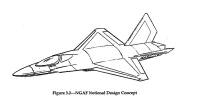Install the app
How to install the app on iOS
Follow along with the video below to see how to install our site as a web app on your home screen.
Note: This feature may not be available in some browsers.
You are using an out of date browser. It may not display this or other websites correctly.
You should upgrade or use an alternative browser.
You should upgrade or use an alternative browser.
Lentokoneita
- Viestiketjun aloittaja Isäm Maam Puolustaja
- Aloitus PVM
Boeing 747 making; http://www.youtube.com/watch?annota...&feature=iv&src_vid=Ci7EFmO260E&v=oVMfsm81ICs
BATTLE of X-planes;
BATTLE of X-planes;
Viimeksi muokattu:
The Fighter Collection 'Razorback' P-47G is one of only two Curtiss-built examples left in the world. She was the 129th P-47G built at the Curtiss facility in Buffalo, New York in early 1944. The fighter was accepted by the USAAF in September 1944 and transferred to the Third Air Force at Tallahassee, Florida. It was here that she was re-designated as a TP-47G to reflect the training role she undertook with a number of Advanced Fighter Transition Units.
Our P-47G was struck from the USAAF inventory in late June 1945 and was eventually passed to the Aero Industries Technical Institute at Oakland Airport, California. It was here that she taught hydraulic and electrical systems to aeronautical students until 1952 when she was bought by Jack Hardwick, a former Cleveland National Air Race pilot, who rented her out in 1953 to Allied Artists for ground scenes in the film Fighter Attack.
Following her silver screen appearance she was parked up in El Monte, California, with a number of other World War Two aircraft until 1975 when she passed to a new owner who commenced a restoration of this rare machine. The work was not completed and the unfinished project passed to Ray Stutsman in late 1979 where a full restoration begun the following year which culminated in a first flight during April 1982, which was rewarded with the Grand Champion Warbird trophy at Oshkosh in July of that year. It flew with Stutsman at many events across North America until 1987 when she passed to the Lone Star Flight Museum, based at Galveston, Texas. She flew rarely during her time at Lone Star, when she passed to Flying A Services in the early 1990s and was shipped to the UK.
The fighter remained in her shipping container until she joined The Fighter Collection fleet in 2006. A full restoration programme was undertaken in order to bring the P-47G back to stock wartime condition The scheme our P-47G wears is that of 84th Fighter Squadron P-47D 42-74742 - 'Snafu', the mount of Lt Severino B Calderon in late 1944.
The Ryan XV-5 Vertifan was a jet powered V/STOL experimental aircraft in the 1960s. The U.S. Army commissioned the Ryan VZ-11RY (which was redesignated as the XV-5 in 1962). The XV-5A was finished in Army green, while the XV-5B was painted in white NASA colors. The XV-5 would be one of the last aircraft made by Ryan, which made mainly drones after the mid 1960s. Two 12,500 lb (maximum gross weight) XV-5A were evaluated in late 1966 by 15 test pilots (the "XV-5A Fan Club"). One was destroyed in a crash during a public flight demonstration on April 27, 1965, killing Ryan test pilot Lou Everett. Ads and tests proposed a rescue version which would winch a person into a compartment behind the pilots. The second plane was extensively damaged in 1966 during trials as a rescue aircraft when the dummy was ingested into a wing fan, fatally injuring the pilot, Bob Tittle, although it was judged that the fan actually still functioned well enough to continue controlled flight. The second plane was rebuilt as the modified XV-5B, with tests continuing until 1971. A XV-5B can be seen at the Fort Rucker Aviation Museum, Alabama.
Juurikin näin, ei tuolla koneen takana vois olla koko kannen mitalla,jos puhallusta ei suunnattais pois. Kiinalaisilla on tuollainen taustalevy,mut venäläisestä tukialuksesta en ole varma.
Siviili-ilmailussa käytetään myös virtaussuojia, suihkumoottorien vuoksi. Niiden pääasiallinen tarkoitus kuitenkin siviililentokentillä, sekä myös asevoimien lentotukikohdissa, on ohjata virtaukset ylöspäin ja suojella muita lentokoneita virtauksien vaikutuksilta.
Muutama lento-onnettomuus on syntynyt siviilipuolella sen takia, että lentokoneita on parkkeerattu toisten lentokoneiden virtausten tielle. Lentokoneen ohjauspinnat ja ohjauskontrollit (kaapelit) olivat kärsineet liikaa, ja koneesta katosi kesken lennon kaikki ohjattavuus (kaapelit poikki)
Tämä lento-onnettomuus tapahtui Ranskan Polynesiassa.
crane
Ylipäällikkö
Eipä ole nykyään paljoa kaapeleita koneissa ohjainpintojen liikutukseen.Siviili-ilmailussa käytetään myös virtaussuojia, suihkumoottorien vuoksi. Niiden pääasiallinen tarkoitus kuitenkin siviililentokentillä, sekä myös asevoimien lentotukikohdissa, on ohjata virtaukset ylöspäin ja suojella muita lentokoneita virtauksien vaikutuksilta.
Muutama lento-onnettomuus on syntynyt siviilipuolella sen takia, että lentokoneita on parkkeerattu toisten lentokoneiden virtausten tielle. Lentokoneen ohjauspinnat ja ohjauskontrollit (kaapelit) olivat kärsineet liikaa, ja koneesta katosi kesken lennon kaikki ohjattavuus (kaapelit poikki)
Tämä lento-onnettomuus tapahtui Ranskan Polynesiassa.
Kaukovittuilija
Kapteeni
JAS Gripen juuri kotikentälleen laskeutuneena:




Viimeksi muokattu:
Kaukovittuilija
Kapteeni
YF23 piirros:


Iran kertoo kopioineensa kaapatun USA:n lennokin
( http://www.kaleva.fi/uutiset/ulkomaat/iran-kertoo-kopioineensa-kaapatun-usan-lennokin/664079/ )

( http://www.kaleva.fi/uutiset/ulkomaat/iran-kertoo-kopioineensa-kaapatun-usan-lennokin/664079/ )

Solar Impulse II tuli kaapista ulos; http://www.solarimpulse.com/en/our-adventure/solar-impulse-2/#.U3dbkGeKCUk



